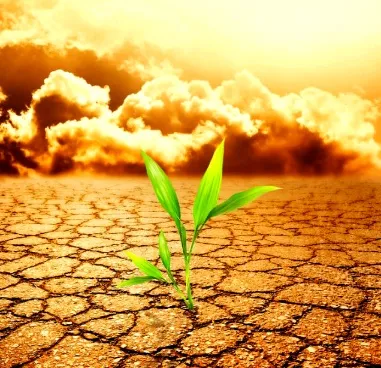Published may 29:2024
Australia is a land of diverse and extreme weather conditions, often resulting in various natural hazards. Among these, bushfires, cyclones, floods, and droughts are particularly significant due to their frequency and impact on communities and the environment. This blog post explores each of these natural hazards, delving into their causes, effects, and the strategies employed to manage and mitigate their impacts.
Bushfires: A Summer Menace
Bushfires are a common occurrence in Australia, particularly during the hot and dry summer months. These fires can start from natural causes like lightning strikes or human activities such as campfires, discarded cigarettes, or deliberate arson.
Causes and Conditions
Hot, Dry Weather:The primary condition for bushfires is prolonged periods of high temperatures and low humidity.
Vegetation: Australia’s natural flora, such as eucalyptus trees, contain oils that are highly flammable, exacerbating the spread of fires.
Impacts
Environmental Damage: Bushfires can devastate large areas of forest, impacting biodiversity and habitats.
Human and Property Loss: Communities can be destroyed, leading to loss of life and property.
Air Quality: The smoke from bushfires can cause significant health issues, affecting respiratory health and reducing air quality over vast areas.
Management and Mitigation
Firebreaks and Controlled Burns:These are used to remove excess vegetation and reduce the potential fuel for fires.
Early Warning Systems:Technology and monitoring systems help predict and alert communities about fire risks.
Community Preparedness:Public education campaigns on fire safety and evacuation plans are crucial in reducing the human toll.
Cyclones: The Fury of the Wet Season
Cyclones are intense tropical storms that affect northern Australia, typically during the wet season from November to April. They bring strong winds, heavy rain, and storm surges.
Causes and Conditions
Warm Ocean Waters: Cyclones form over warm ocean waters, which provide the energy needed to fuel these powerful storms.
Atmospheric Conditions Specific atmospheric conditions, including low pressure and wind patterns, contribute to cyclone formation.
Impacts
Wind Damage: Cyclones can cause widespread damage to buildings, infrastructure, and vegetation due to their powerful winds.
Flooding: Heavy rains can lead to severe flooding, impacting homes, roads, and agricultural lands.
Storm Surges: Coastal areas are particularly vulnerable to storm surges, which can lead to severe coastal erosion and inundation.
Management and Mitigation
Building Codes: Structures in cyclone-prone areas are built to withstand high winds and storm surges.
Evacuation Plans: Effective evacuation strategies are crucial to protect human lives during cyclone events.
Early Warning Systems:Advanced meteorological systems provide early warnings, allowing communities to prepare and respond promptly.
Floods: The Deluge of Heavy Rains
Floods are another significant natural hazard in Australia, particularly affecting the northern and eastern regions during periods of heavy rain.
Causes and Conditions
Heavy Rainfall: Intense and prolonged rainfall is the primary cause of flooding.
Geography: The topography of certain areas can exacerbate flooding, with low-lying regions and river basins being particularly vulnerable.
Impacts
Infrastructure Damage:Floodwaters can damage roads, bridges, and buildings, disrupting communities and economies.
Agricultural Losses:Floods can destroy crops and livestock, significantly impacting the agricultural sector.
Water Contamination: Flooding can lead to water contamination, posing health risks to affected populations.
Management and Mitigation
Flood Defenses: Levees, dams, and drainage systems are critical in managing floodwaters.
Urban Planning:Designing cities and towns with flood-prone areas in mind can help mitigate damage.
Emergency Services:Effective emergency response and recovery plans are essential to support affected communities.
Droughts: The Silent
Droughts are prolonged periods of below-average rainfall, leading to water shortages and significant impacts on agriculture and ecosystems.
Causes and Conditions
Climate Variability:Natural climate variability, including phenomena like El Niño, can contribute to drought conditions.
Human Activities:Overuse of water resources and land management practices can exacerbate drought conditions.
Impacts
Water Supply: Droughts can severely impact water supply for households, industries, and agriculture.
Agricultural Stress:Lack of water affects crop production and livestock, leading to economic losses and food insecurity.
Environmental Stress:Ecosystems and wildlife can suffer due to reduced water availability.
Management and Mitigation
Water Conservation:Implementing water-saving practices and technologies can help manage water resources more effectively.
Drought-Resistant Crops:Developing and planting drought-resistant crop varieties can help sustain agriculture during dry periods.
Policy and Planning:Governments need to develop and implement policies aimed at sustainable water management and drought preparedness.
Conclusion
Natural hazards like bushfires, cyclones, floods, and droughts pose significant challenges to Australia. Understanding these hazards, their causes, and their impacts is crucial in developing effective strategies for mitigation and management. Through technological advancements, improved planning, and community education, Australia continues to enhance its resilience against these natural threats.









